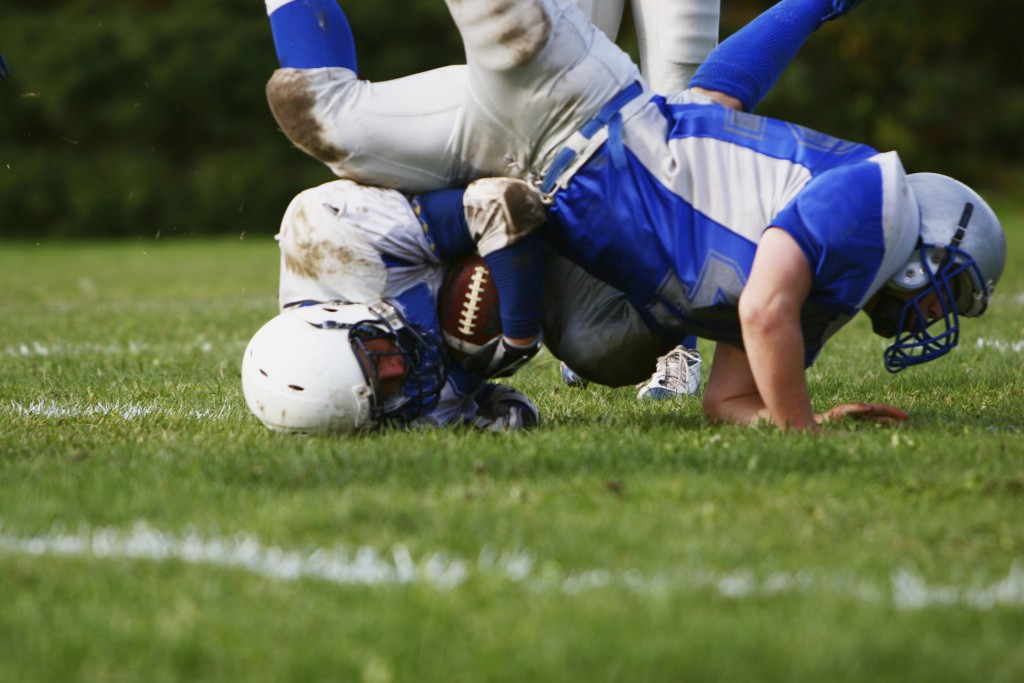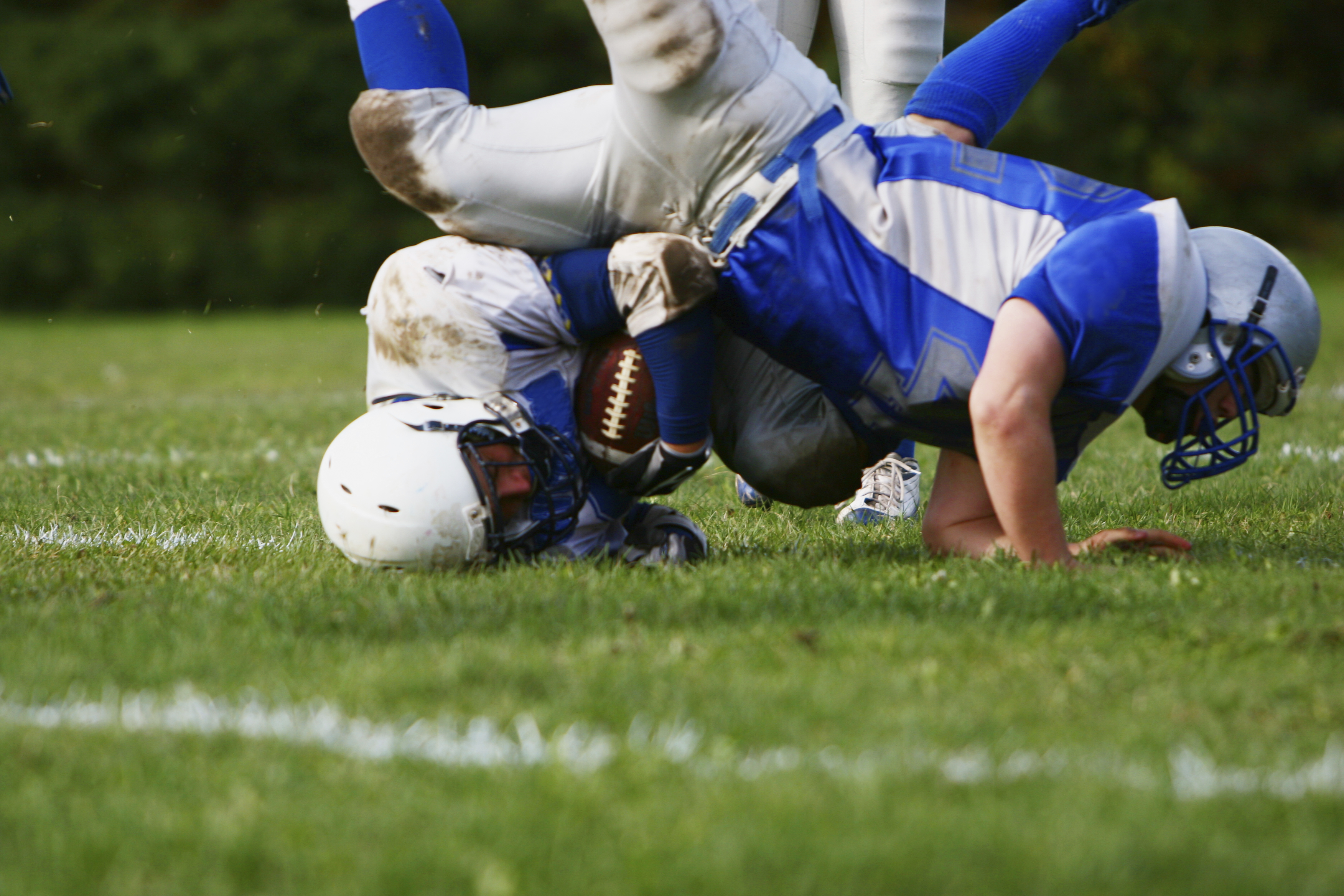
Researchers increasingly believe that football-related head trauma is more likely to result from multiple, and often perfectly legal, hits. While a national debate is underway to institute hit counts in football, UConn’s NeuroSport program is spreading awareness about how to recognize and recover from a concussion, particularly among the sport’s youngest athletes.
The director of NeuroSport, Dr. Anthony Alessi, notes that on the playing field, the athletes most susceptible to concussions are the youngest ones, yet attention to this injury is largely focused on older athletes. In professional football, for example, doctors and trainers closely monitor the 1,800 players. Those experts are not on the sideline at the games of the more than 3 million football players in middle school and younger.
“Our goal is to get out and teach athletes, coaches, and parents how to spot a concussion and the importance of rest,” he says.
Alessi discussed concussion and how to recognize it with UConn Today.
What is a concussion and what are the signs of a concussion?
A concussion is best defined as a syndrome, or group of symptoms, of immediate and transient neurologic impairment after a biomechanical force is applied to the brain. A blow to the brain produces a group of symptoms. That’s the definition of a concussion. The challenge with a concussion is that it is a physiologic change, so it’s not something you see in a picture, such as on a CT scan, or you see outwardly on the brain. The early signs when the blow occurs are typically things like headache, dizziness, nausea, confusion, amnesia. Those are the things we look for immediately – symptoms that are hopefully transient.
What is the treatment?
Time. Interestingly 90 percent of all concussions will get better within 10 days. So you don’t have to be a rocket scientist to treat concussion, but the real point is knowing to give the brain rest. The brain is a very resilient organ, so if you give it time to rest, it will repair itself. We know that. Our problem is when people don’t recognize these early signs and continue their normal activities, especially when athletes don’t come out of a game or aren’t pulled out of a game and then suffer a second blow – a “second impact” – which has a much worse prognosis and much longer recovery time.
How do you know when to send a player back into the game or when someone should start a practicing again?
The first thing is to recognize the original signs and get them off the field. And at that point, begin that restful period. What’s difficult is that often the patient because of the injury has amnesia and doesn’t know that they’ve suffered a concussion. So with that, we rely a lot on observers. You’ll see that in the National Football League now and even at UConn on the sidelines, we have spotters looking for early signs of concussion in athletes on the field. The things we look for are a long time for an athlete to get up from being hit, an athlete who is holding his head or her head after being hit, and more importantly, if they stagger going back to the huddle or going to the next play. It’s that initial notification, it’s that initial spotting of the concussion that becomes so crucial.
When should a parent consult a doctor?
Some 3.8 million people will present to an emergency room with a concussion this year. If you suspect that your child has had a concussion, whether it be related to sports or any other activity, you should consult a doctor. And if your child is experiencing severe symptoms, meaning they have trouble staying awake or they are behaving differently than typical, get them to an emergency room or urgent care center immediately. Afterward, you can schedule an appointment either with your primary care provider or with us over at NeuroSport.
What is the role of the NeuroSport program?
The NeuroSport Program here at the University of Connecticut is our effort to take everything we’ve learned by treating high level athletes and what we’ve learned in our research at UConn and bring it to the community. We’ve set up a clinic in Storrs which includes myself, Dr. Cory Edgar, who’s a sports orthopedist, and Dr. Matthew Hall, who’s a primary care sports medicine specialist. The biggest project we’re working on now is an educational one. If you want to solve any public health problem, you have to educate the end user. For example, if you want to solve the problem of cholera in Haiti, you educate people on using clean water. If you want to correct the problem of HIV in Africa, you teach safe sex practices. It’s the same with concussion. Our goal is to get out and teach athletes, coaches, and parents how to spot a concussion and the importance of rest.
I can get my mind around what rest for a body is, but what is rest for a brain?
There used to be an opinion in neurology that you need to cocoon people after a concussion – no bright lights, no reading. And people would do that for extended periods of time. What we’ve found in the last year or so, is that that helps only for a short period of time. So I don’t really give people absolute shutdown for more than three days. After that you have to start building up activity. After about two days of rest, we want to get them back to some aerobic activity. If they can walk without symptoms, then we get them on a treadmill. We’ve found that the growth factors of the brain start to regenerate and go up at that point in time. So it’s a changing field in terms of rest, but what we really want to do is get them away from the computer, texting, TV – and rest, rest, rest. Meaning, if they want to sleep, let them sleep. Sleep is a wonderful thing for the human brain.
So what is the typical recovery time?
There is no typical recovery time. I tell other physicians when I go out and lecture, if you’ve seen one concussion, you’ve only seen one concussion. Everyone is different, because there are so many other factors that play into a concussion and that’s where the neurologist plays an important role. For example, does the athlete have Attention Deficit Disorder? Is this a female athlete? Because we know it takes longer for women of child-bearing age to recover after a concussion. As I said, 90 percent get better within 10 days, but it’s that 10 percent where it’s a coin toss. You need to evaluate each patient individually with a careful neurological examination.



